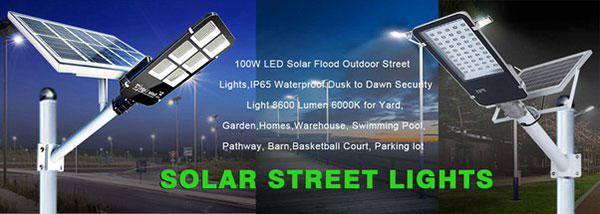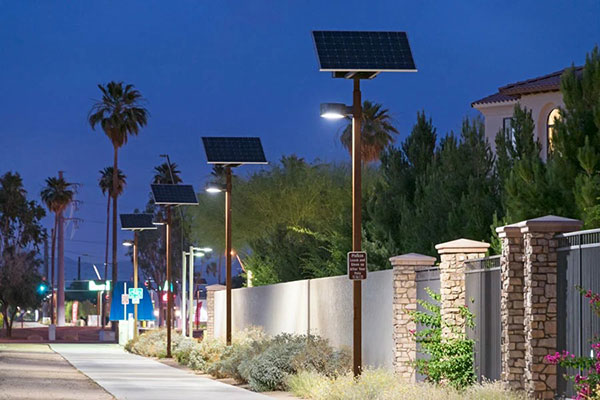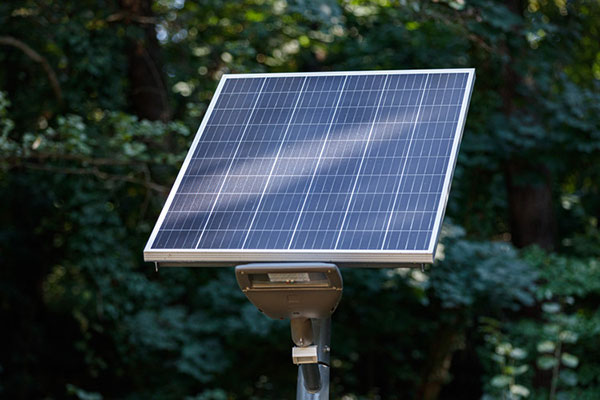Can solar panels be powered by lights?
2024-04-02
Solar Panel and the Fascinating Role of Light
Solar panels, also called photovoltaic, turn sunlight into electricity. It all centers on the photovoltaic effect, in which sunlight’s photons knock electrons loose from atoms found in the solar cells. These electrons generate a flow of electricity. A typical solar panel comprises silicon cells, glass casing, a metal frame, and wiring to transfer electric current from the silicon. Given this context, the indispensable significance of silicon, a semiconductive material, emerges as it is responsible for absorbing and converting sunlight into usable electricity. However, the efficiency level of solar panels varies, depending on the sun’s intensity and duration. On average, a residential solar panel system converts approximately 18% to 22% percent of the solar energy it collects to electricity. Yet, the efficacy can be compromised by various factors including the angle of the panel, temperature, shading, and so forth. However, this does not undermine the fact that silicon plays a crucial role in solar panel technology. Another pivotal element in the efficiency of a solar panel is the type of solar cell used.Types and Efficacy of Solar Cell
There are three common types of solar cells used in the market; monocrystalline, polycrystalline, and thin-film. Monocrystalline solar cells are best known for high-efficiency rates and durability. They are made from a single, pure crystal of silicon. These features allow electrons to move efficiently, producing more electricity. Their usual efficiency averages between 15% to 20%, making them perfect for limited space. Polycrystalline solar cells tend to have lower efficiency rates between 13% and 16% as they are made by melting multiple silicon crystals together. The cooling process is faster and cheaper than that of a monocrystalline cell. It results in multiple crystals, which hinder the movement of electrons, thus lowers the efficiency. Thin-film solar cells have the lowest efficiency – it typically ranges from 10% to 13%. However, they are the cheapest to produce and are the most versatile. They can be made from a variety of materials, such as cadmium telluride, amorphous silicon, and copper indium gallium selenide. Their lower efficiency has been countered by their increased versatility. Thin-film solar promises to become the best kind of solar cells, as they can be utilized in a multitude of applications, from rooftops to portable solar products. The primary disadvantage of solar panels is that they can only function when sunlight is available. At night or cloudy days, their efficiency drops significantly, and they produce little to no electricity. This is one of the reasons why solar panels are often associated with batteries: the batteries are used as energy storage solutions, which ensure a constant supply of electricity. To function more lucratively, solar power is often connected to the grid, so homeowners can draw power from the grid when solar production is too low. During high-production times, they can sell the excess energy generated by their solar system back to the grid. Fortunately, there are no technological constrictions to solar power usage, meaning that research and progress in the field of solar energy, as well as in battery energy density, continue to improve the efficiency and reliability of solar power. Knowing these principles and limitations will help citizens and cities take advantage of solar power properly, which will help shape a sustainable, renewable energy-based future. One of the potential alternative energy sources is artificial light. Artificial light sources, such as LED, fluorescent lamps, or incandescents, can be utilized to power solar panels when there is no sunlight. However, the energy output from solar cells under artificial lighting is much lower. This is due to the spectral match and the intensity of artificial light. Typical artificial light sources, such as LED or fluorescent lights, are much thinner in the spectrum than sunshine, as will be seen below. Also, their intensity is usually much less than that of the sun, which also reduces power generation. Sunlight vs. Artificial Light Spectra Compared Sunshine covers many wavelengths, such as visible light, ultraviolet ray, and infrared ray. Sunlight, due to this, has a very good match to the ideal domain across which solar cells can convert the absorbed photons to output energy. Also, artificial lights use a very thin range of wavelength bands. For example, LED and fluorescent lamps emit little or no ultraviolet or infrared rays but are composed of visible rays. Moreover, sunlight’s intensity is also much more than most artificial lights. The scope of sunlight matches the optimal domain of solar cell spectra very well, compared to artificial lights. The Solar cells absorb more in the green-to-yellow part of the spectrum. In contrast, this is the area where the spectral intensity of some parts of the light is much less, like the common LED and fluorescent lights. Efficacy of Different Artificial Lights on Solar Cells Large variations exist in the efficacy of different types of artificial lights in touching off solar cells’ power output. LED artificial lights are the most effective because they are narrow steady with intensities up to maximum eyeball intensity. However, one must accept the inefficiency of artificial light in generating power from solar cells compared to the original sunshine. Extensive tests prove that indoors, large areas of electricity usage can work perfectly with solar cells to gain their power from artificial lights. For example, LEDs and fluorescent light. Even though incandescent bulbs are least efficient in terms of electricity consumed, they are preferred as sources for solar cells, since they provide a broad spectrum of light similar to that of the sun. At the same time, they are not regular sources, as they produce less intensity and more heat, which are not recommended for solar power. The use of artificial light for solar cells to produce electricity implies a number of practical issues related to indoor and low-light operations. First, using artificial light allows running the devices at night, when there is no sunlight. Hence, such products as indoor sensors, calculators, and chargers may work quite efficiently under office light conditions. Second, artificial light may have some substantial perspectives associated with energy recycling if combined with solar cells. Lights may be used to perform their regular function of illuminating rooms, and, at the same time, can provide electricity for charging some of the appliances used at home and in the office. These systems, though, are not yet very efficient and often ineffective in terms of costs. They may become efficient only once the cell technology is developed deeper and cheap artificial sources of light are produced. Thus, the research proves that the use of artificial light to help solar cells produce electricity appears to be the viable option to help these systems be used on the premises and at night and provides some perspective of further efficient energy recycling. The other issue is that artificial sources of light generate heat, such as incandescent bulbs, and some types of LEDs. The excess heat may interfere with the performance and lifetime of the solar panels, therefore, solutions for cooling and light sources not generating the heat should be explored. The other matter relates to the spectrum, which may change depending on the light source. Solar energy cells were developed with sunlight in mind, and as such are not effective in other environments. Thus, materials and cell types which can absorb a broader spectrum, should be developed. Factors That Affect Efficiency Several significant factors which affect artificial light harvesting by solar panels include the following: Spectrum – Unlike in sunlight, the spectral output of artificial lights will always vary, presenting solar cells with a variety of light spectra. Different solar cells may have differing levels of sensitivity to specific parts of the spectrum. For example, a particular LED light can be emitting light slightly outside the absorption spectrum of traditional silicon cells. Moreover, LEDs also emit light, which is almost entirely absent in sunlight, which does match silicon cells’ spectrum. Light intensity decrease – The artificial light sources generally have lower light intensity than sunlight. Since power output of solar cells is directly proportional to the intensity of light, this figure plays a substantial role in determining the energy output from artificial sources, both affecting and being affected by the next factor. Light distance – As per the inverse square law, the intensity of light decreases with the square of the distance from the source. This, in turn, means that the solar cells should be as close to the source of light as possible, to maximise harvested energy. Angle of incidence – in addition to the distance, the angle which the light forms with the solar panel is also influential, since the panel can absorb less light and generate less electricity should the angle be suboptimal.Impact of Light Intensity and Artificial Light Type
Artificial light type and its intensity are among the most important factors influencing the efficiency of solar energy harvesting. By themselves, LED lights have high luminous efficiency and do not exude too much heat, which makes them generally more appropriate for solar energy harvesting in the indoors. Still, they will not ensure high efficiency either, as their light may be emitted at the same wavelengths which are not the most suitable for standard solar cells. Fluorescent lights not only offer a more broad specter suitable for harvesting at the same spectrum they frequently alternate emitting lights in different wavelengths which may disrupt the stability of panels’ work. Critically, though incandescent lights’ natural spectrum of light is the closest to the spectrum of the sun, which certainly makes their use educative, they are not energy-efficient and emit too much heat. Thus, the best artificial light to use with solar panels and to increase their efficiency will also not e incandescent lights but some kinds of artificial LED light. Design Conditions for Maximum Energy Harvest To optimize energy harvest using artificial lumen, several design considerations need to be accounted for. Firstly, we need to keep developing solar cell materials that will be able to absorb light at a broader and broader range. In 2015, for instance, it was discovered that solar cells using the material perovskite could achieve optimal work at any spectrum of light, which seems to open new ways for creating solar cells for artificial lighting in the future. Secondly, we need to design and install solar panels in such places and at such places so that they get the maximum light intensity from them. Finally, we need to design and use lamps which would be the most energy-efficient and which light would best coincide with the light which solar cells absorb the best. In other words, maximum energy harvest conditions can be reached if we design systems which do not function separately but are designed to function with each other: for instance, in 2019 Swedish scientist were able to design and create lamps that can illuminate a room and, at the same time, be used to power photovoltaic devices. Through the discussion of these points on design considerations and challenges, it is expected that a better understanding of how solar panels can be enhanced through the use of artificial light could be reached. It could potentially increase the chances of solar panels as a form of accessing low-light environments, such as indoor.Applications for Real Life and Economic Implications
At the moment, the use of solar panels in low-light environments through artificial light sources can potentially reshape how energy is used in many indoor or low-light environments. The concept can potentially allow for the application of solar energy in environments where it is not currently possible due to the frequent lack of sunlight. One of the most significant factors in the applicability of the technology is that in many low-light environments, including such common structures as malls, warehouses, and office buildings, lighting might be required. Solar panels can generate electrical energy through the use of an already existing source – artificial lighting. This can significantly reduce the overall energy usage of a building since the electricity generated can power a variety of devices and systems throughout a building. Several of the potential applications of solar panels with artificial lighting have been already mentioned through the use of the indoor agriculture industry and other existing possibilities.Applications for Use
A number of applications for solar panels with artificial light have already been mentioned, including:- Indoor agriculture;
- Smart buildings;
- Retail and advertising purposes;
- Emergency battery charging.


